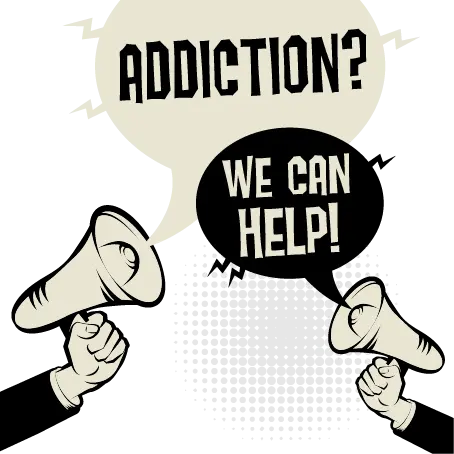Sober Living For Marijuana Addiction | Asheville, NC


Get in Touch With Us

Sober living for marijuana addiction is an important component of a treatment plan. Marijuana, according to the Centers for Disease Control and Prevention, is the most frequently abused addictive substance after cigarettes and alcohol, with over 48.2 million people, or about 18% of Americans, using it at least once in 2019 alone. Marijuana’s legal status has been a hot topic for years. However, even if marijuana is legal, it is addictive. Therefore, it is important to be aware of the effects of this drug as well as the treatment options available for you or a loved one.
Marijuana Use in the United States
According to recent studies, 30% of users have marijuana use disorder. Marijuana use disorder is even more likely to develop in those who start using the drug before age 18. The vast majority of Americans who oppose marijuana legalization cite increased car accidents involving marijuana-impaired drivers as a very important reason. Furthermore, 69% say a very important reason for opposing legalization is that it would lead to the use of more addictive and dangerous drugs.
Despite opposition, 17 states and the District of Columbia have legalized small amounts of marijuana for adult recreational use, according to the National Conference of State Legislatures. According to a nationwide survey, 43% of U.S. residents currently live in a jurisdiction that has legalized the recreational use of marijuana. The graph below illustrates the increasing number of individuals who use marijuana within the United States.

Is Marijuana Dangerous?
Yes. The brain’s memory, learning, attention, decision-making, coordination, emotion, and reaction time are all impacted by marijuana use. Infants, children, and young adults who still have developing brains are especially vulnerable to the harmful effects of marijuana. Marijuana use has been connected to an increased risk of schizophrenia or psychosis in some individuals. Using high-potency marijuana every day may increase the risk of developing psychosis by nearly five times in comparison to people who abstain, recent studies suggest.
In addition, An amotivational syndrome, a lack of drive to participate in rewarding activities, has been connected to marijuana use. The endocannabinoid system regulates mood and pleasure, so marijuana use early in life may cause brain changes leading to amotivational symptoms.
Because of the irritant effect on the throat and lungs, marijuana smoke, like tobacco smoke, causes a harsh cough when inhaled. In addition to the presence of comparable levels of harmful volatile chemicals and tar, concerns about cancer and lung disease are also raised.
How Addictive is Marijuana?

Those who support marijuana use want others to believe that it is organic, safe, and entirely harmless. Science, however, does not support this opinion. According to the National Institute on Drug Abuse (NIDA), about 9 percent of marijuana users become addicted to the drug over time. That percentage increases to 17 percent if marijuana is used heavily during the teen years or 25-50 percent if it is used daily.
THC, the active ingredient in marijuana, binds to receptors in the brain and produces chemical responses linked to comfort and pleasure. The brain defends against chemical manipulation by deactivating or shutting down receptors. Marijuana alters the brain, resulting in issues such as irritability, restlessness, and insomnia when people attempt to quit using it. Marijuana addiction can cause serious problems, including disruptions in sleep, work, and social life, and is a well-known danger of marijuana use.
Marijuana Addiction Treatment
In general, the length of time for marijuana addiction treatment is contingent on your level of care, your personal needs, your financial needs, drug use history, and other personal factors. Because every person progresses at a different rate than their peers, it is of the utmost importance that drug rehab is individualized. Most treatment programs include detox, inpatient treatment, outpatient treatment, and aftercare sober living services.
With this in mind, some detox programs last for days or weeks. Inpatient or outpatient care may last for days, weeks, or months, in some cases. Research indicates that adequate treatment durations are critical to successful treatment outcomes, including long-term abstinence and achievement of personal treatment objectives. Treatment length is crucial in determining whether treatment will be successful.

Download Our Free eBook
How Does Sober Living Help?
Upon completing a substance abuse and addiction treatment program, an individual will receive an aftercare plan. An aftercare program is a co-creation between the individual and his or her medical treatment team that is created during treatment. It provides individuals with in-depth and expansive assistance, which includes pointers for how to deal with problems after treatment, relapse prevention techniques, and more to aid in long-term sobriety. Moving to a sober living home, typically a component of one’s aftercare plan, is frequently recommended.
Rather than returning home after treatment, sober living communities provide a higher level of support in a community setting as residents continue to build upon the skills and knowledge they learned in treatment. Sober living is a foundational component of recovery that enables its residents to prepare for reintegrating into society. The National Institute on Drug Abuse (NIDA) states that the amount of time someone spends in substance abuse treatment (including sober living) directly influences their success in recovery.

Who Needs Sober Living?
Sobriety living facilities can be great matches for many people. First, if you’ve recently completed an inpatient program or a rehab stay and you need structure, a sober living facility might be a good fit. If you’ve recently relapsed and discovered that being in environments around alcohol and drugs or having no structure, in particular, is triggering, you may benefit from a sober living residence. Furthermore, transitional housing centers with sobriety requirements may be beneficial if you are battling addiction and housing insecurity.
How Can I Find a Sober Living Home for Marijuana Addiction?
Sober living homes provide structure for maintaining sobriety goals and community support for those seeking treatment for marijuana addiction. You or your loved one may benefit from sober living home opportunities that are tailored to your or their specific needs. Here are some suggestions for finding the right sober living home for your marijuana addiction recovery:
Maintain Sobriety
You must be in active recovery from marijuana addiction in order to secure a spot at a sober living facility. Seek treatment at a drug or alcohol addiction therapy center and complete the program in order to be eligible for entry. Sober living homes assist you with maintaining sobriety, living independently, and transitioning back into daily life outside of treatment. You will not be as closely monitored by a sober living home as you were by your drug treatment facility. If you are a fresh recovering addict and are having trouble staying sober, you may require more support than a sober living home can provide.
Decide on Location
The location of a sober living house is critical because it will be the hub of all of your daily activities. Safety and accessibility are paramount. To ensure that you are safe and have easy access to everything you need while living in a sober living home, consider the following location-related issues:
- Is the home in a safe neighborhood?
- Is it close to work/school?
- Will I be able to have a vehicle?
- Is it close to local support group meetings?
- Is it too close/too far from home?
Make Sure Sober Living Home is Legitimate
In some states, sober living residences are not always regulated by local or state law. Because of this, some people who are new to sobriety may assume that all sober living facilities are regulated. It’s not uncommon for unscrupulous landlords or real estate agents to open and operate sober living homes that lack regulation or licensing. These homes are not equipped to support those in recovery. Before picking a sober living house, it should have the proper licensing and be staffed by individuals in their own recovery. Additionally, sober living residences should offer around-the-clock supervision to ensure the safety and well-being of both residents and staff.
Confirm Zero-Tolerance Policy
It is crucial for a quality sober living environment to have a zero-tolerance policy on drugs and alcohol. Staff should be proactive and vigilant in enforcing policies and guidelines. Substance use should be immediately removed from those in violation of that policy. This type of enforcement safeguards the welfare and safety of both residents and staff.
Does Insurance Cover Sober Living?
In order to comply with the Affordable Care Act (ACA), insurance providers must provide mental health and substance abuse treatment services. Despite the fact that sober living homes are safe environments in which people may recover from substance abuse, they are not considered treatment facilities. As a result, sober living is not usually covered by insurance companies. This may be a huge setback for those who wish to seek out more care after finishing their treatment program. It may also be harmful to long-term substance abstinence.
Normally, sober living residences require their guests to pay rent plus any other living expenses. Most sober living homes encourage residents to return to work. Having a job will help you gain self-esteem and establish a foundation for your future. Sobriety living facilities realize that switching over to life is hard, but it will enable you to adjust by paying your bills and establishing a routine after your sober living experience is over.
Sober Living at Oak Tree
Oak Tree Recovery Homes provides recovery support to men of all ages in Asheville North Carolina, so that they may gain the skills needed for long-term rehabilitation after in-patient care. Everyday support is offered to residents during their stay, as well as a safe, loving environment. Residents are encouraged to follow the 12-step program in order to overcome the obstacles that prevent them from seeking a life of freedom and choice.
Contact one of our specialists today if you want to learn more about sober living at Oak Tree. We welcome all questions and look forward to helping you achieve lifelong sobriety.